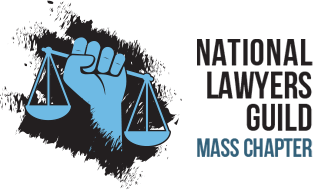Flowers v. All White Juries
Madison Levin
When selecting a jury, the attorneys for both sides have the opportunity to peremptorily challenge prospective jurors, striking them from the jury without needing to provide an explanation. These challenges, however, are not without limits. In 1986, in the seminal case Batson v. Kentucky, the Supreme Court ruled that a State may not discriminate on the basis of race when exercising peremptory challenges. Batson set the rule that once a defendant has sufficiently alleged discrimination, the State must provide race-neutral reasons for each peremptory strike. Then the judge decides whether the reasons given are legitimate or pretextual. This is not a difficult standard for an attorney to meet:
As the Supreme Court explained in Purkett v. Elem, the Batson rule “does not demand an explanation that is persuasive, or even plausible.”
In many jurisdictions, the number of peremptory challenges available to an attorney exceeds the number of prospective black jurors. This occurred in the majority of the six cases against Curtis Flowers. In 1996, four people were murdered in Winona, Mississippi. Mr. Flowers, a black man, was accused of the crime and tried six times by the same white prosecutor. In a recent decision, Flowers v. Mississippi, the Supreme Court reversed Mr. Flowers’ most recent conviction due to overwhelming evidence that the prosecutor excluded black jurors because of their race.
In Mr. Flowers’ first trial, he was convicted by an all white jury and the Mississippi Supreme Court reversed the decision due to prosecutorial misconduct. In the second trial, out of thirty prospective jurors, only five were black. The prosecutor used his peremptory challenges to strike all five. In a Batson hearing, the trial judge found that the prosecutor had discriminatory intent when he challenged one particular juror and ordered him seated. He was the only black juror. Mr. Flowers was convicted and the Mississippi Supreme Court again reversed the decision because of prosecutorial misconduct. In the third trial, the State was allowed fifteen peremptory strikes and used them all against black jurors. Only one black person was included on the jury and they were seated after the State ran out of peremptory strikes. Mr. Flowers was again convicted and the Mississippi Supreme Court reversed the decision because the prosecutor discriminated on the basis of race in the jury selection process. Confirming the difficulty of proving a Batson violation, the Mississippi Supreme Court stated that each individual challenge appeared to be race neutral but because every strike was against a prospective black juror, the racial discrimination was clear. In the fourth trial, the State used all eleven of its peremptory strikes against black jurors, but because there were sixteen prospective black jurors, the final jury was made up of seven white jurors and five black jurors. The jury was unable to come to a unanimous decision, resulting in a mistrial. Similarly, in the fifth trial, a jury made up of five black jurors and nine white jurors also hung, resulting in another mistrial. During the sixth trial, at issue in Flowers v. Mississippi, the State used a total of six peremptory strikes, five of which excluded black jurors. A jury with one black juror convicted Mr. Flowers and unlike the previous cases, the Mississippi Supreme Court affirmed the decision. The United States Supreme Court, however, found a Batson violation and reversed the lower court decision.
The majority in Flowers v. Mississippi listed several reasons that they found the prosecutor had discriminatory intent. Over the course of six trials, the State prosecutor used his peremptory challenges to strike 41 out of 42 prospective black jurors, demonstrating a clear pattern. The Court acknowledged that in the sixth trial, which is the only one at issue in this case, the prosecutor chose not to challenge a black juror. However, the Court suspects that he allowed this juror to be seated in order to obfuscate his racially discriminatory intent when removing the remaining five prospective black jurors. In the sixth trial, the prosecutor disparately questioned prospective black jurors. He asked the five black jurors he ultimately struck a total of 145 questions. In contrast, he asked the eleven white jurors that sat on the jury a total of 12 questions. The increased investigation of prospective black jurors allowed the prosecutor to collect extensive data from which he could choose something to use as a pretext for excluding them while not acquiring information that would justify excluding their white counterparts. Finally, the prosecutor struck a prospective black juror for stated reasons that also applied to white jurors he did not strike.
The Supreme Court emphasized that they did not decide if any of these factors alone would substantiate a Batson violation. For example, the exclusion of the black juror who was similar to white jurors that were not challenged might be permissible in a different context. In this case, with the overwhelming history of excluding black jurors, the Supreme Court is willing to be more skeptical. This sets an extremely high standard that a defendant must meet in order to demonstrate for the Court that the prosecution excluded jurors because of their race. As Justice Alito stated in his concurring opinion, this is a highly unusual case; it is likely the only case of its kind. If another prosecutor, in another case, in a larger jurisdiction, gave the same reasons for challenging black jurors, a court would not find discriminatory intent. Justice Alito contends that this is true even if there were other discriminatory factors such as a disproportionate number of questions asked to that black juror. It weren’t for the unusual case that provided six trials worth of blatant racism on the part of the prosecutor, Justice Alito would not have ruled with the majority in this case.
In a system that depends too heavily on prosecutorial discretion and does not have any reasonable prosecutorial accountability, the Supreme Court set an almost impossible standard for proving racial discrimination in jury selection.



